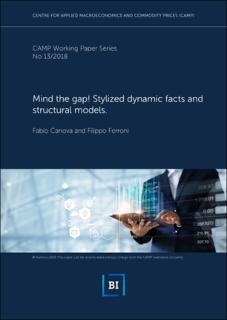| dc.contributor.author | Canova, Fabio | |
| dc.contributor.author | Ferroni, Filippo | |
| dc.date.accessioned | 2018-12-13T15:47:41Z | |
| dc.date.available | 2018-12-13T15:47:41Z | |
| dc.date.issued | 2018-12-11 | |
| dc.identifier.issn | 1892-2198 | |
| dc.identifier.uri | http://hdl.handle.net/11250/2577654 | |
| dc.description.abstract | We study what happens to identified shocks and to dynamic responses when the structural model features q disturbances and m endogenous variables, q ≤ m, but only m1 < q variables are used in the empirical model. Identified shocks do not necessarily combine structural disturbances of the same type. Instead, they are linear combinations of current and past values of all structural disturbances. Appropriate theoretical restrictions may be insufficient to obtain structural dynamics. The theory used to interpret the data and the disturbances it features determine whether the empirical model is too small. An example shows the magnitude of the distortions and the steps needed to reduce them. We revisit Iacoviello [2005] ’s evidence regarding the transmission of house price shocks. | nb_NO |
| dc.language.iso | eng | nb_NO |
| dc.publisher | BI Norwegian Business School | nb_NO |
| dc.relation.ispartofseries | CAMP Working Paper Series;13/2018 | |
| dc.title | Mind the gap! Stylized dynamic facts and structural models. | nb_NO |
| dc.type | Working paper | nb_NO |
| dc.source.pagenumber | 29 | nb_NO |
